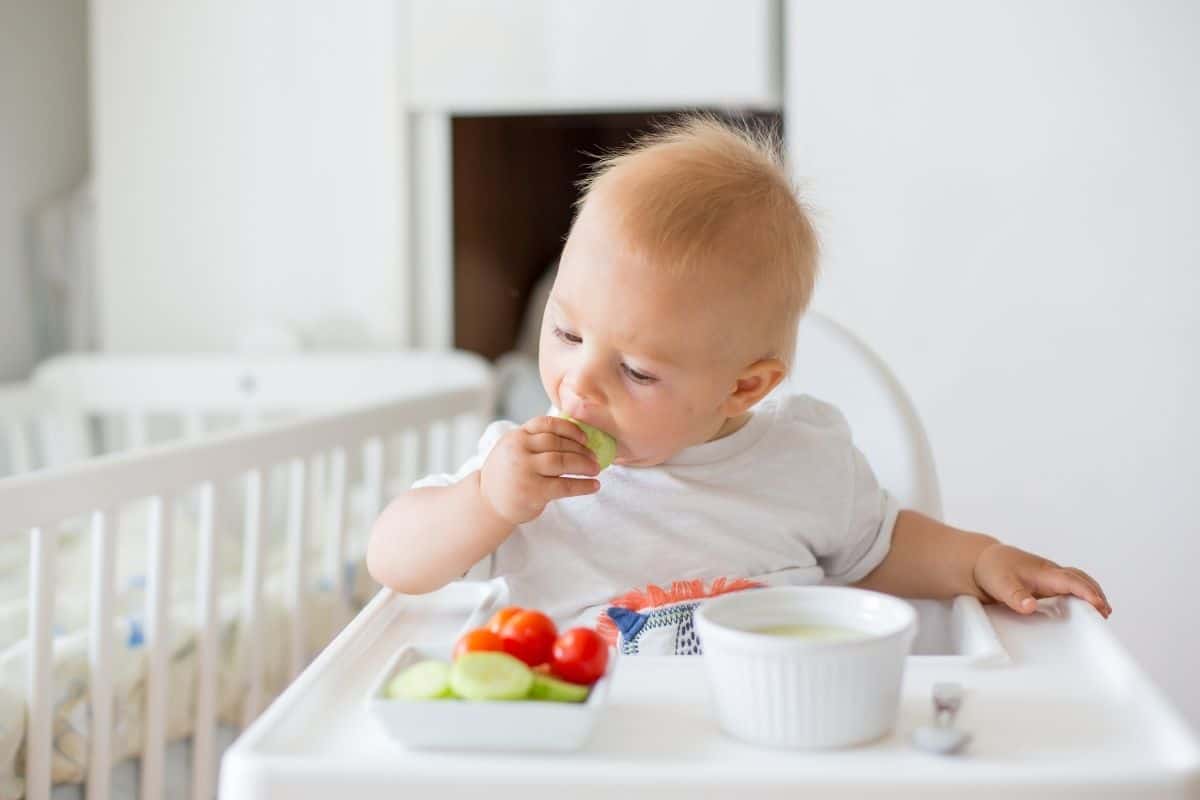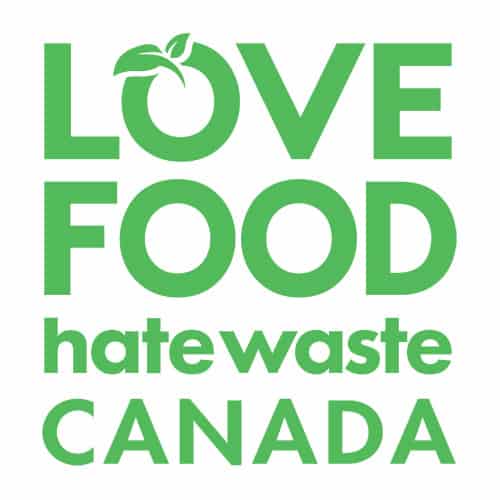Disclaimer: This blog post was written in collaboration and paid partnership with Love Food Hate Waste Canada. As always, all opinions are our own.
Food waste: did you know 63% of all the food wasted in Canada is avoidable?
From food throwing to not eating something because they’re still learning to enjoy it, the waste from feeding babies can add up (and give you heart palpitations if waste makes you feel a little anxious!).
While it’s unlikely that you won’t be able to re-capture 100% of the food served to your baby that doesn’t get eaten at that meal (unless you have a furry friend who will eat anything), there are many many strategies you can employ to keep it to a minimum!
In collaboration with Love Food Hate Waste Canada who is tackling 5 Ways With ____ (insert many commonly wasted foods), we’ve compiled five easy ways you can prevent food waste when feeding babies.
Read on for our money-saving, earth-saving, and sanity-saving tips!
Strategy #1: The Refill Bowl
As adults we tend to fall into a routine of eating roughly the same amount of food each day. We only need to eat in response to our bodies’ fluctuating energy needs. On top of their energy expenditure, babies also need to eat to grow and develop! Studies show that babies may go days to weeks without growing and then suddenly grow half an inch in length! (so yes, you’re not crazy if you think your baby grew up overnight!) Because of this and simply due to more variables being involved, babies’ food intake can vary wildly from one day to the next!
While the rollercoaster of food intake is normal, it’s still frustrating for parents because it’s impossible to predict how much food your baby will eat at her next meal!
You might feel like you’re left with a conundrum when you’ve prepared a bunch of food and then your baby only eats one bit of it… you could either:
- Respect her fullness signals, throw the leftovers out and waste a bunch of food
- Encourage her to eat the food, thus not “wasting” the food, but totally overriding her eating intuition
Tough choice, right?
Except, we’d like to present to you a solution whereby you can both respect your baby’s eating intuition WITHOUT wasting food!
It’s called the refill bowl.
This strategy can be used both when spoon feeding or offering your baby handheld foods.
For handheld foods: Keep the majority of the food in the refill bowl and place 1 or 2 pieces of each type of food on your baby’s plate or highchair tray. Once your baby has eaten those pieces, you can add more to their plate! Then at the end of the meal, you can put the rest of the food from the refill bowl in the fridge for next time!
For spoon feeding: Keep the majority of the puree in a bowl next to you with a large spoon in it. Drop a spoonful into another bowl from which you will feed your baby. Feed the spoonful to your baby and keep refilling it, as needed. At the end of the meal, you can put the rest of the puree from the refill bowl in the fridge for next time!
Food prepared for your baby (that she hasn’t touched with either her fingers or mouth) can be kept in the fridge for 2-4 days.
Watch Jessica demo the refill bowl on Instagram Stories here!
If you’re wondering why you can’t just feed your baby from one bowl and place it back in the fridge, it’s not recommended from a food safety standpoint. Your baby may have a small amount of illness causing germs (ie: viruses and bacteria) in our mouths that his immune system is able to keep at a low level. But if you transfer those germs to a bowl of food, they now have free access to a food source and will multiply at a rapid rate! Then if you feed that food to your baby, there’s an exponentially higher amount of germs, which could potentially overwhelm the immune system and cause your baby to be sick.

Strategy #2: Batch Cooking
The freezer is one of your best friends in the fight against food waste. You want to be mindful of typical storage times to maintain food quality but freezing will keep food safe almost indefinitely!
Check out this A-Z storage guide by Love Food Hate Waste Canada.
When making pureed food for your baby, you can freeze them in an ice cube tray or little silicone pods like these. If you have ice cube trays on hand, no need to buy something special but if you need to order something new anyhow, we like these silicone ones because the silicone makes it easier to pop the frozen pods out and they also double up as popsicle molds and baby muffin tins!
If the puree is thick enough, you could also line a baking tray with wax or parchment paper and drop the puree by spoonfuls onto the tray to freeze! Then just place the little frozen mounds in a reusable bag to pull out as needed.
When making handheld foods for your baby like fritters, kabobs, waffles, etc., you can also freeze these and defrost as needed! Just be careful when using a microwave because “hot spots” can appear on the food. We like to reheat food thoroughly (wrapped in a paper towel) and then allow it to cool for a few minutes before serving it to baby.
Strategy #3: Make sure the food you are serving your baby is developmentally appropriate.
If you’re at the age and stage of parenting where you’re thinking: it might be time to start solids! Then definitely assess your baby to ensure they are:
a) truly developmentally ready to start solids, which for most babies is around that sweet spot of 6 months. More and more, we see parents are starting on the early side at 4 months. While this isn’t wrong, the truth is, most babies aren’t quite ready at 4 months.
and
b) offer your baby foods that they can be successful with. We’re huge believers that when we do well as caregivers, our babies do well too. Additionally, you help prevent food waste by choosing the right first foods for your baby to experiment with.
For example – offering your baby shredded cheese or O shaped cereal at six months isn’t a great idea. At this age, they’ve got a might ol’ palmar grasp that makes it very hard to pick up tiny foods. When your baby is closer to 8 – 10 months and practicing their pincer grasp, smaller pieces of food makes a bit more sense!
Not only will this make the process of feeding a lot less frustrating for your baby but it can also help to minimize food waste. How? Well, if your baby can’t quite pick up toys and large objects and bring them to her mouth, the likelihood of that beautiful steamed broccoli making it to her mouth is slim to none. Instead, it might just slip around and fall onto the floor resulting in waste. Likewise, that O shaped cereal is going to have a party on the food tray and end up on the floor. #savethecheerio
Additionally, if your baby at 6 – 7 months is really not into picking their own food, don’t worry. You can absolutely switch gears from the popular baby led weaning approach and offer puree or lumpy textured foods. Your baby can self-feed this or you can offer it by spoon.

Strategy #4: Plan to make recipes the whole family can enjoy together!
Ah…meal planning. Many of us have a hate-love relationship with meal planning but truth be told, planning family meals in general can significantly help to reduce food waste because you’re likely buying exactly what you need. To top that, you can absolutely plan meals in a way that includes food for your baby so that you’re not having to make too many separate dishes for all of the members in your family.
Besides, who has time for that!?
In the past we’ve covered ways in which family meals can be adapted for your baby. But, whatever it looks like for you, ensure that you’ve got a vision for what you hope to consume food-wise for the days or week ahead. Having a “rough” strategy keeps you accountable to the perishable items you have at home and allows you an opportunity to…well, love food, hate waste.
Need more meal planning tools? Click here to download a helpful meal planner!
Strategy #5: Feed your baby/toddler solids when they’ve had a chance to develop an appetite.
It’s known all too well, a little bit of hunger is the best way to encourage a healthy appetite. What we mean to say is that you want to build an appeal (aka appetite) for food. Think about it for yourself. If you ate breakfast at 9:30am and got invited to a last minute buffet brunch at 11:00am, you may not have an appetite to eat a meal’s worth of food.
When you initially start your baby on solid food, you’re really just feeding them once per day along with nursing and/or bottle feeding. Over time, you’ll work towards three meals and possibly a few snacks in that first year.
But, if you’re feeding your baby solids and milk every 30 minutes, aka grazing, it can blunt an appetite for those meals. And then, boo! All that food you’ve thoughtfully prepared has the potential to be wasted. And we don’t want that…because not only are we super duper awesome caregivers…but food waste champions too! Does that mean we can walk around with a trophy? Yes please!
In practice and anecdotally, we see many parents have success feeding their new eaters solid food about 40 – 60 minutes after a milk session. While it can take a bit of trial and error, trust yourself and your baby – the two of you will find a rhythm that works. Some days you might need to get right into feeding solid foods and then offering milk. And other days you may need to offer milk first and then solid food.
That’s not all…
We rounded up five ways to prevent food waste when feeding your baby but we know there are lots of other things you can do, such as teach your baby not to throw food (see our 8 point blog post on that here).
We’d love to hear: what ways have you found to prevent food waste when it comes to feeding your baby?
And, if you’re in the market for more food saving tips, be sure to visit @lfhw_ca for easy to digest information so you can be the food waste champion you want to be!







